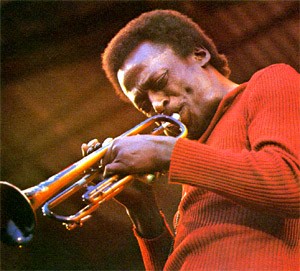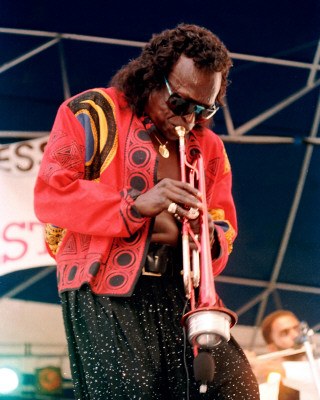Learn A Miles Davis Jazz Lick
 One of the best ways to learn jazz improvisation is to really study and model the jazz licks of master jazz improvisers.
One of the best ways to learn jazz improvisation is to really study and model the jazz licks of master jazz improvisers.
So, today I’m going to teach you how to play a Miles Davis II-V-I lick.
I love this lick because not only is it simple but it’s got some really nice concepts that you’ll be able to model and take into your own playing too.
This is lick #5 in our series of how to play a lick starting on any note. You can check out the rest of the piano licks here.
Miles Davis Lick Video Demonstration
Why don’t you take 4 minutes and watch the video where I show you how to play this lick.
I will of course include the notation below but always remember that listening is an integral part of learning jazz improvisation.
You can’t learn jazz entirely by reading the notation. It’s very similar as if I was trying to learn to speak a new language.
I might be able to pick up a lot of words from reading a book but my accent would be very thick and my pronunciation would most likely be horrible!
To truly get the essence of the jazz language you must listen and model other fluent ‘jazz speakers’. This is especially true when it comes to things like rhythm, beat placement, note duration, and articulation.
So, in other words please listen to the video too. 🙂
Miles Davis Lick Notation
Here’s the notation. Make sure you also scroll down for extra tips to help you learn.
(Click the lick to view it larger in a new window. You can print them from your browser if you’d like.
Feel free to share this notation or page with friends. The only thing I ask is that you credit freejazzlessons.com back with a link. Thanks! )
11 Jazz Improvisation Tips To Help You Learn This Lick
- Check out how Miles places all the chord tones on the strong beats (beats 1, 2, 3 ,4).
- As we discussed in our dominant bebop scale lesson, placing chord tones on downbeats creates a really nice inside sound and propels the lick forward.
(For more information on the bebop scale you can check this lesson on the major bebop scale).
- In the first 2 beats of the V chord measure Miles and the rest of the band use more of an inside mixolydian sound.
- On beats 3 and 4 though he starts using altered extensions of the chord (#9 and b9).
- This creates tension and the need for resolution. It’s really an effective way of leading into the I chord.
If you’re new to the concept of altering scales and chords you can check out this lesson on the altered scale.
- Miles implies the lydian scale just for a second on beat 1 of the I chord (Ebmaj7). By playing a note that needs to be resolved on beat 1 it creates this sense of forward motion and keeps the line moving forward.
 If you want some more information on the lydian mode you can check out this lesson on major chords scales.
If you want some more information on the lydian mode you can check out this lesson on major chords scales.
- One of the things that Miles was simply amazing at was his musical use of space.
- Similar to how a zen master is able to communicate through short powerful ideas, Miles was able to communicate so deeply while often times playing very minimalistic ideas.
- Check out how Miles just ends his phrase on beat 1 of the one chord and then just lets it breath after that. I love his use of space!
- I find that the more I mature as an improviser the more I tend to play my musical phrases like I speak.
- Since I tend to use a lot of space when I speak I really resonate with the way Miles Davis made music.
- If you want to learn more about using space in your phrasing you can check out this lesson on the Miles Davis So What solo.
What about you. Did you enjoy this lesson? Is your own phrasing similar to how you speak? What musician’s phrasing do you love to listen to?
Please leave a comment below and lets get a discussion going!
———————–
- If you’re new here I recommend you subscribe to the freejazzlessons.com email list.
- You’ll receive tons of free lessons right in your inbox that will greatly improve your playing right away!
- You also be joining over 4,500 fellow musicians in one of the fastest growing jazz communities on the internet today.
- You can subscribe on the right side of the site. 🙂 See you on the other side!

